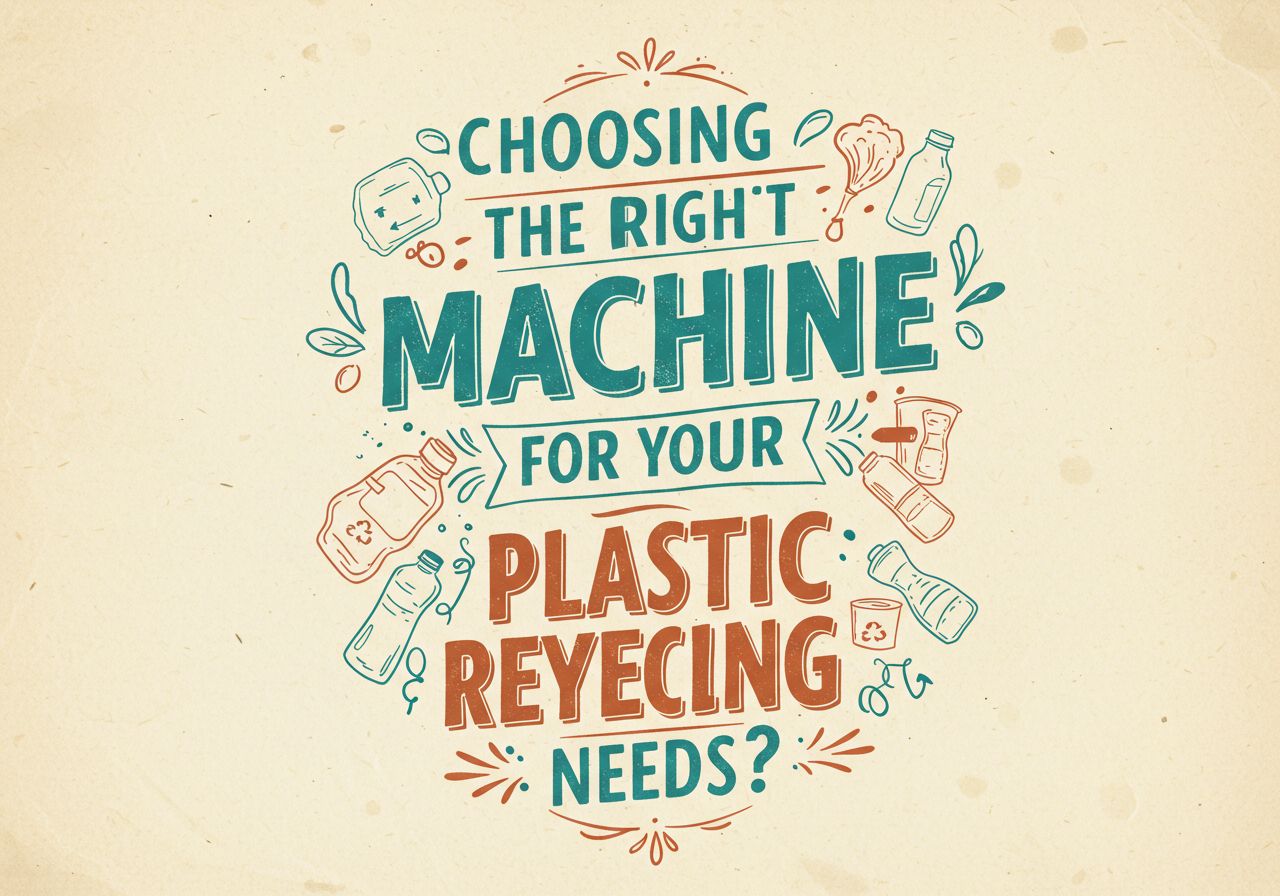The right plastic recycling machine is crucial for improving operational efficiency. Both cutter-compactors and shredders can effectively reduce the size of plastic waste, but they work in different ways. This article will help you determine which machine is best suited for your recycling needs.
Understand Your Input Materials
The first step in choosing between a cutter-compactor and a shredder is to analyze the characteristics of the plastic waste you are handling. Consider the following factors:
Plastic Type: Are you dealing with flexible materials such as polyethylene (PE) and polypropylene (PP), which are commonly found in packaging? Or are you processing rigid, heavy plastics and industrial waste? Different types of plastic require different processing methods. According to the U.S. Environmental Protection Agency (EPA), PE and PP are common recyclable plastics, but each has unique processing requirements.
Size and Form: Is the plastic in the form of films, bags, or solid plastic blocks? Are these items large and bulky, or smaller and easier to handle? The size and form of the plastic will influence how the machine processes it. For example, nonwoven fabrics or PP woven bags may be better suited for a shredder, as these materials tend to be larger and bulkier.
Contaminants: What types of contaminants are typically present in the waste? Some cutter-compactors and shredders have advantages in handling specific contaminants.
Cutter-Compactor: Best for Flexible Materials and Uniform Processing
Cutter-compactors are ideal for handling flexible plastics such as films, packaging, and other PE and PP materials. Their dual-blade system cuts and blends these materials, creating a uniform mix that is easier to process in subsequent extrusion. Here’s why a cutter-compactor might be your best option:
- Homogenization: The mixing action of a cutter-compactor ensures consistent feed for the extruder, which is crucial for producing high-quality pellets, especially when recycling printed and unprinted packaging materials.
- Integrated Processing: Cutter-compactors combine cutting, extrusion, and pelletizing functions in one system, reducing the space required and eliminating the need for additional preprocessing steps.
- Gentle Cutting: Cutter-compactors use a gentle cutting process that minimizes material degradation, which is critical when processing polymers. The mild cutting action helps maintain the integrity of polymer chains, ensuring the final product performs well.
Shredder: Best for Heavy-Duty Size Reduction
Shredders are perfect for handling bulky, dense plastics. Their powerful rotating blades and hydraulic piston systems are designed to break down and tear apart large plastic pieces. If your waste includes the following types of materials, a shredder might be your best choice:
- Hard Plastics: Shredders are excellent at handling thick, rigid plastics that a cutter-compactor might struggle with.
- Large Materials: Shredders excel at breaking down large, irregular plastic pieces, making them ideal for handling oversized or heavy waste.
- Direct Feeding into Extruder: Shredders can directly feed material into the extruder, ensuring efficient and steady throughput, especially useful when handling large volumes of material.
Comparing Operational Efficiency
Energy Consumption
- Cutter-Compactor: These machines use integrated systems that allow the prepared material to be processed directly, eliminating the need for pre-cutting or shredding, making them more energy-efficient.
- Shredder: Due to their robust design, shredders consume more energy, but they save time and effort by feeding material directly into the extruder.
Space Requirements
- Cutter-Compactor: These machines have a compact design, significantly reducing the space required for operations. The integration of the cutter-compactor, extruder, and pelletizer reduces the need for additional material handling.
- Shredder: Shredders generally require more floor space but can be integrated into larger systems.
Maintenance
- Cutter-Compactor: The fixed blades of cutter-compactors are easy to replace, and overall maintenance is relatively simple.
- Shredder: Shredders have more moving parts, including hydraulic pistons, and require more frequent maintenance to keep the machine running smoothly.
Conclusion
Choosing the right machine—whether a cutter-compactor or a shredder—depends on your material requirements and operational goals. Cutter-compactors are ideal for processing flexible plastics and offer integrated processing that optimizes the workflow. Shredders, on the other hand, are better suited for handling rigid, large, and bulky plastics. Selecting the right equipment can enhance recycling efficiency and drive long-term profitability. If you’re unsure which option best fits your specific needs, consulting an expert can help you make an informed decision.
Frequently Asked Questions
Q1: What is the main difference between a cutter-compactor and a shredder?
A1: Cutter-compactors are ideal for processing flexible plastics and create uniform material for extrusion, while shredders are designed for larger, harder plastics and bulky items.
Q2: Which machine is best for recycling flexible plastics?
A2: Cutter-compactors are best for processing flexible plastics like PE and PP, as they provide gentle cutting and mixing action.
Q3: Can a shredder handle large plastic pieces and tough materials?
A3: Yes, shredders are specifically designed to handle bulky, dense plastics, including large and tough materials.
Q4: Are cutter-compactors energy-efficient?
A4: Yes, cutter-compactors are very energy-efficient because they integrate cutting, extrusion, and pelletizing in one system, reducing the need for additional preprocessing.
Q5: How does a shredder affect space requirements?
A5: Due to their robust design, shredders require more space but can be integrated into larger recycling systems.
Q6: How often does a shredder need maintenance?
A6: Shredders require more frequent maintenance than cutter-compactors due to their moving parts and hydraulic systems.



